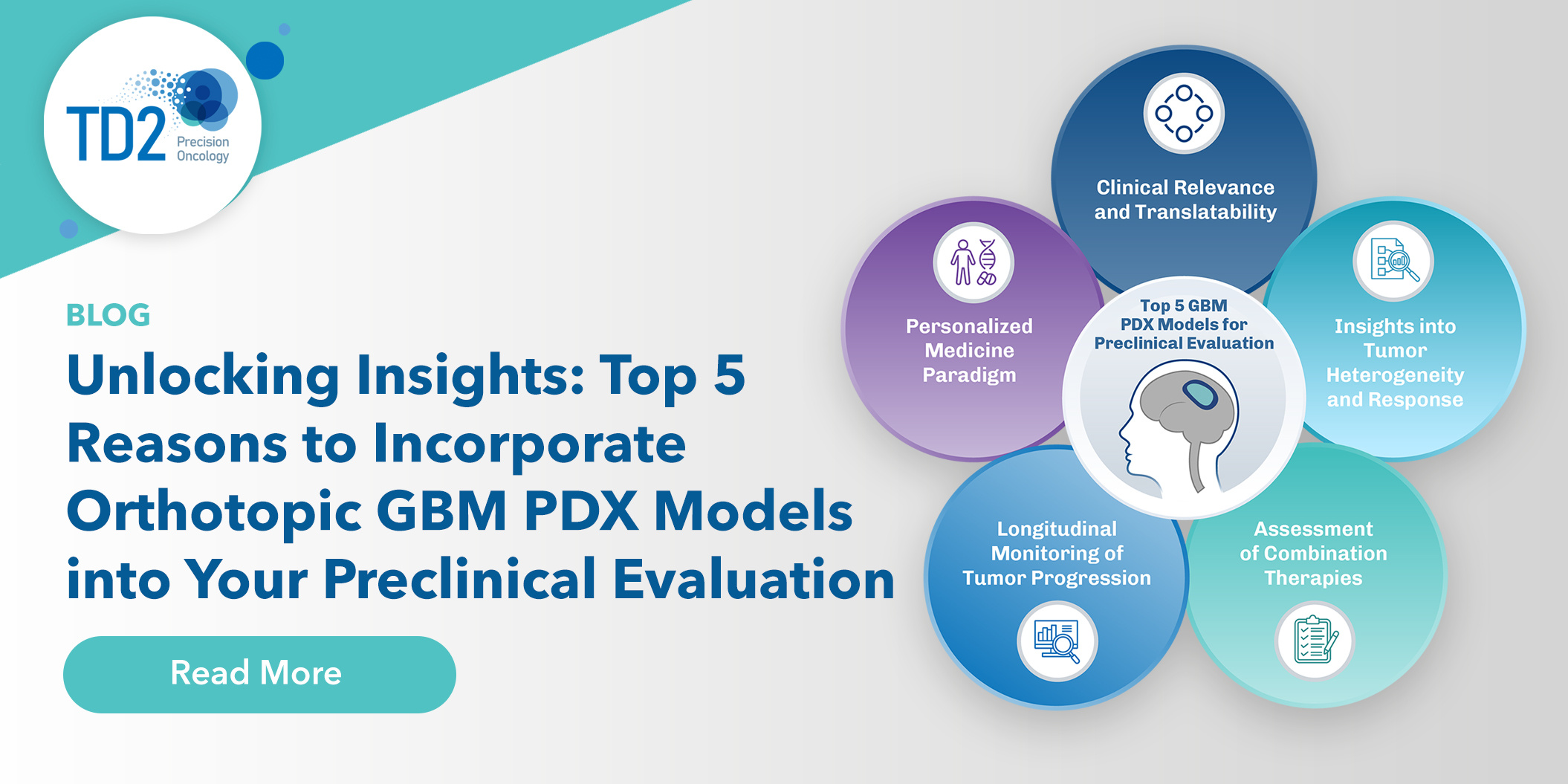In the landscape of glioblastoma multiforme (GBM) research, the utilization of Orthotopic GBM Patient-Derived Xenograft (PDX) models stands as a pivotal strategy in preclinical evaluation. These models faithfully recapitulate the intricate tumor biology of GBM, offering invaluable insights into therapeutic efficacy and disease progression. Here are five compelling reasons why integrating Orthotopic GBM PDX models into your preclinical assessment is paramount:

1. Clinical Relevance and Translatability
Orthotopic GBM PDX models faithfully mirror the molecular and histopathological characteristics of patient tumors, ensuring clinical relevance and translatability of preclinical findings. By closely recapitulating the complexity of GBM, these models provide a robust platform for evaluating therapeutic interventions with high predictive value for clinical outcomes.
2. Insights into Tumor Heterogeneity and Response
Glioblastoma is renowned for its intertumoral heterogeneity, posing significant challenges in therapeutic development. Orthotopic GBM PDX models capture this heterogeneity, enabling the exploration of tumor response to various treatments across diverse genetic backgrounds. Through optical imaging and other advanced techniques, researchers can delineate the spatial and temporal dynamics of therapeutic response, guiding the development of targeted therapies.
3. Assessment of Combination Therapies
The multifaceted nature of GBM necessitates the exploration of combination therapies to overcome treatment resistance and improve patient outcomes. Orthotopic GBM PDX models offer a robust platform for evaluating combination regimens, facilitating the identification of synergistic interactions and optimal treatment strategies. By assessing the efficacy of combination therapies in a clinically relevant context, researchers can expedite the translation of promising therapeutic combinations into clinical trials.
4. Longitudinal Monitoring of Tumor Progression
Understanding the dynamics of tumor progression and therapeutic response is critical for refining treatment strategies in GBM. Orthotopic GBM PDX models enable longitudinal monitoring of tumor growth, invasion, and response to therapy, providing valuable insights into disease progression and treatment efficacy. Through non-invasive optical imaging and other imaging modalities, researchers can track tumor evolution over time, facilitating the development of personalized treatment approaches.
5. Personalized Medicine Paradigm
The era of personalized medicine heralds a shift towards tailored treatment approaches based on individual patient characteristics. Orthotopic GBM PDX models align with this paradigm by allowing for the evaluation of patient-specific responses to therapeutics. By incorporating patient-derived tumors into preclinical studies, researchers can identify optimal treatment regimens tailored to individual tumor profiles, paving the way for precision oncology in GBM management.
TD2's Expertise in Orthotopic GBM PDX Models:
At TD2, we leverage our expertise and capabilities to maximize the potential of Orthotopic GBM PDX models in preclinical evaluation. Our capabilities include:
- MOA-Based Filters: Utilizing selections driven by your drug’s specific mechanism of action to guide candidate prioritization and therapeutic optimization.
- Diverse Tissue Analysis: Offering a wide range of tissue types, including fixed tissue, for the analysis of novel markers and molecular signatures associated with GBM.
- Assessment of Tumor Progression: Conducting comprehensive assessments of tumor progression as single agents and in combination with standard therapies via orthotopic primary tumor models.
- Well-Established Protocols: Implementing well-established protocols that ensure an extremely high post-surgery survival rate, facilitating robust and reproducible preclinical studies.
- Data-Rich and Highly Characterized Models: Providing data-rich and highly characterized Orthotopic GBM PDX models with a standard of care, enabling comprehensive analysis and interpretation of preclinical results.
Incorporating Orthotopic GBM PDX models into preclinical evaluation, supported by TD2's expertise, holds immense promise for advancing GBM therapeutics and improving patient outcomes. By harnessing the power of these models, researchers can accelerate the development of novel therapies and pave the way for personalized treatment approaches in the fight against glioblastoma.



